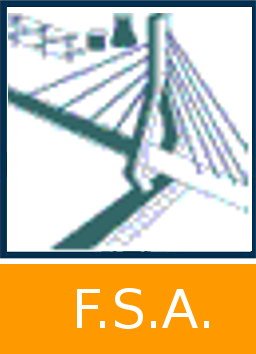Aerodynamic optimization of an aileron of a racing car
Martínez Cacho, Alicia 
Promoteur(s) :
Andrianne, Thomas 
Date de soutenance : 7-sep-2020/9-sep-2020 • URL permanente : http://hdl.handle.net/2268.2/10046
Détails
| Titre : | Aerodynamic optimization of an aileron of a racing car |
| Auteur : | Martínez Cacho, Alicia 
|
| Date de soutenance : | 7-sep-2020/9-sep-2020 |
| Promoteur(s) : | Andrianne, Thomas 
|
| Membre(s) du jury : | Terrapon, Vincent 
Calleja Vazquez, Juan Manuel 
|
| Langue : | Anglais |
| Mots-clés : | [en] Aerodynamics [en] Wind Tunnel [en] CFD [en] Fluent [en] Car aerodynamics [en] Aileron [en] Prandtl Lifting line |
| Discipline(s) : | Ingénierie, informatique & technologie > Ingénierie aérospatiale |
| Public cible : | Grand public |
| Institution(s) : | Université de Liège, Liège, Belgique |
| Diplôme : | Cours supplémentaires destinés aux étudiants d'échange (Erasmus, ...) |
| Faculté : | Mémoires de la Faculté des Sciences appliquées |
Résumé
[en] On a race car, aerodynamics has determined consequences on the performance on each circuit. The downforce contributes to a better tyre performance on the corners, whereas a reduction of the drag makes possible to reach higher maximum velocities and to reduce the fuel consumption. One of the most common devices used to improve the downforce is the aileron. Nevertheless, the downforce generated comes together with a rise on the drag, leading to a need of wide study to have a compromise between the two effects.
In this report, the aileron of the Fun Cup Evo 3 race car is studied to optimize its position regarding the angle of attack. This study is conducted by means of wind tunnel experiments on the wing isolated and numerical simulations of the 2D profile of the wing. In addition, the deflection of the flow upstream of the aileron generated by the car is determined with a wind tunnel experiment performed on a scale model of the car. The vertical deflection obtained, which varies spanwise, is used by the application of the Prandtl lifting line theory to estimate the performance of the aileron on real conditions. Finally, the results of these experiments are used to select three angles of attack that optimized the performance for different situations: maximum downforce-to-drag ratio, α between -19° and -9°; maximum downforce, α=-23°; and minimum drag, α=7°.
Fichier(s)
Document(s)
Annexe(s)
Citer ce mémoire
L'Université de Liège ne garantit pas la qualité scientifique de ces travaux d'étudiants ni l'exactitude de l'ensemble des informations qu'ils contiennent.


 Master Thesis Online
Master Thesis Online



 Tous les fichiers (archive ZIP)
Tous les fichiers (archive ZIP) Alicia_Martinez_Cacho.pdf
Alicia_Martinez_Cacho.pdf

